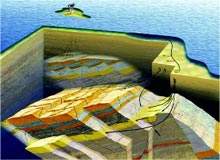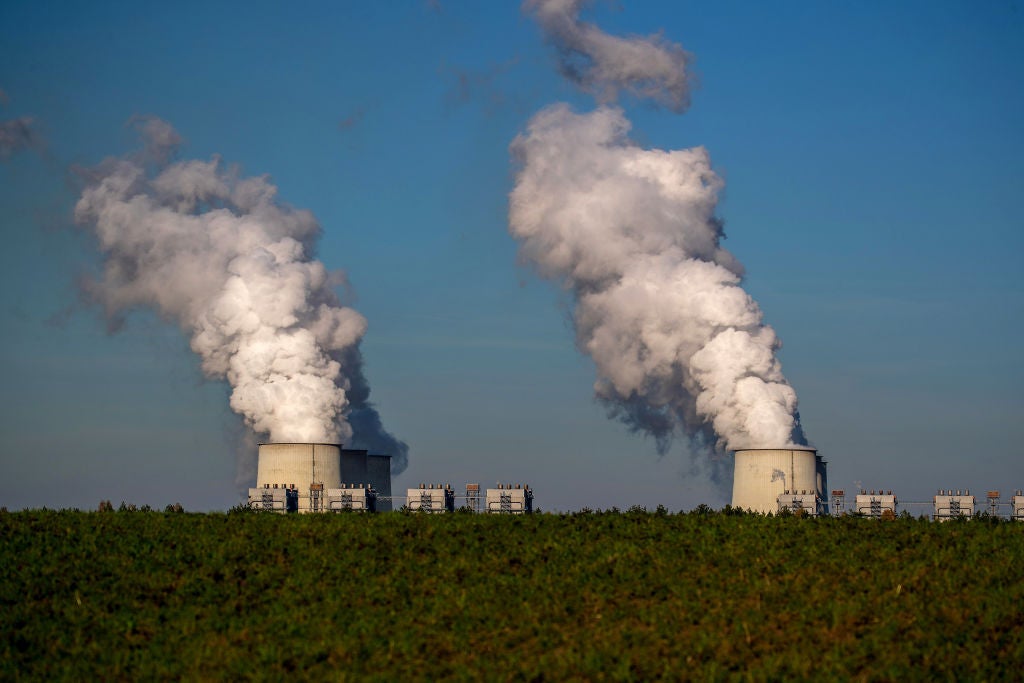
Well site data is central to the success or failure of any hydrocarbons operation. Even more important is the ability to obtain the data quickly to analyse it and, crucially, make decisions based on what it reveals.
Real-time data allows quicker and better operational decision-making. Today, most well site data is provided to the major oil companies by logging vendors, such as Baker, Halliburton or Schlumberger. These contractors, in conjunction with the major oil companies, have developed new instrumentation to improve the quality of data and increase the speed with which it is collected.
Traditionally well site data is either time-based or depth-based open-hole data, but Statoil is now spending a lot more time on real-time data. This is data collected in real time onboard a rig / platform and transmitted via a high-capacity network connection to specialist analysts around the world who help interpret the data – a process called integrated operations.
According to Harald Laastad, a senior discipline advisor in integrated operations for subsurface at Statoil: “Data itself is of limited value to an oil company. More important is what is done with the data. Oil companies are interested in decisions, but to get from data to decisions you need three things: time, tools and skills. Real-time data adds complexity to this picture. Although real-time data allows decisions to be made very quickly, Statoil and other large oil companies still collect data from wireline logging, core data and mud logging services. These services are common for exploration wells.”
NEW TECHNOLOGY
See Also:
Statoil is constantly looking for new technology and measurements to help it interpret the subsurface. These technologies include advanced testing methods to determine flow capability or a ‘wired drillpipe’, using a broadband connection from the drilling platform down to the bit. This technology is very exciting, as oil companies can use sophisticated measurements to guide the drilling process in real time.
How well do you really know your competitors?
Access the most comprehensive Company Profiles on the market, powered by GlobalData. Save hours of research. Gain competitive edge.

Thank you!
Your download email will arrive shortly
Not ready to buy yet? Download a free sample
We are confident about the unique quality of our Company Profiles. However, we want you to make the most beneficial decision for your business, so we offer a free sample that you can download by submitting the below form
By GlobalDataHowever, one limitation on the technique appears to be the data transmission rate, which is currently limited to 10bps–20bps. Laastad says: “This is currently a real bottleneck. Potentially we could transmit hundreds of thousand of bps from a sophisticated instrument array near the bit. All of the instrumentation can be packed into a collar of just under 7in.”
Downhole instruments can include technology to take magnetic, passive Geiger counter and annular pressure measurements, as well as carry out nuclear magnetic resonance, rock velocity, azimuthal density of rock, resistivity formation pressure and a whole host of other sophisticated tests. Technologies such as these are included in the logging-while drilling (LWD) or measurement-while-drilling (MWD) services that Statoil and other oil companies use to find hydrocarbons in the earth and guide the drill bit to the ideal point in the reservoir.
Optimum well placement results in greater recovery from the well. Another new technology, deep-reading directional electromagnetic measurement, can detect bed boundaries and fluid contacts in the well hole approximately 15ft ahead to ‘geosteer’ the well to the best area of the reservoir.
DATA COMPATABILITY
One of the most important aspects of using data is getting it into the correct form in the data handing system. According to Laastad: “In the past this has been a bit of a challenge, as all the logging vendors have different data formats.” Statoil uses a number of different logging vendors, and having data in several different formats became a problem when interpreting data in real time from a number of platforms working in the same region. To remedy this situation, Statoil, BP, Shell,
Exxon-Mobil, Chevron, Landmark, Baker Hughes, Schlumberger, NPSi and Sperry-Sun launched the Wellsite Information Transfer Standard Markup Language (WITSML) initiative in 2000–01. Under the initiative data is stored in a standard format.
WITSML is based on the internet standards (W3C, SOAP, WSDL and XML) and has its own applications program interface and agreed D and C domain-specific XML schema definitions. The first working prototype of WITSML was released in September 2001.
DATA QUALITY
Although well site data has reached an impressive peak of sophistication, new advances are always likely in the future. Laastad said: “Improvements in data quality can be achieved by developing better instrumentation, and by logging vendors improving their routines, competence and equipment as well as adhering to standards. Data must be actively monitored and quality-controlled before it enters the database, so that all data also has metadata – indicating how, why and where it was acquired – which can be read prior to its entering the company datastore.”
About five years ago, Statoil set up a real-time data support centre, with the task of coordinating the real-time data from all areas of the Statoil operation before it is distributed to the company’s internal systems. Laastad said: “This has worked extremely well, and is now something a lot of other oil companies are copying. It saves a lot on time spent presenting specialists with the data in a form that can be interpreted quickly.”
Real-time data can sometimes be of lower quality than ‘final, corrected’ well site data, and it is important to know prior to interpretation what kind of data is being presented. To avoid confusion, Statoil has developed naming standards. For archiving purposes, raw data is stored separately to interpreted data.
SCORE PROJECT
In 1998–2001 Statoil introduced its SCORE project. This project, which was regarded as part of Statoil’s core business, was set up to make more efficient use of well site data in combination with Statoil’s subsurface software packages. The project made it easier to obtain archived data and correlate or extrapolate it to new fields, and it was a foundation for current data handing systems. SCORE project objectives included:
● Reducing data preparation time, improving business decision-making
● Reducing the time required to build a geological model by a factor of two
● Reducing the time required to update a geological model by a factor of ten
The SCORE project improved subsurface modelling by using an integrated application platform, including data management tools, and also by introducing improved work processes. Laastad says: “SCORE allowed Statoil to focus on data quality, and it has provided the foundation for where we are today.”
FUTURE IMPROVEMENTS
Further improvements will include faster data transmission speeds from the well site and its distribution to local and regional operation support centres. This is important in integrated operations, as it allows better and faster decision-making. Many of these systems are being implemented in Statoil’s operations worldwide.
In the future, sensors will be smarter and able to make a much wider range of measurements, take deeper readings, see ahead of the bit while drilling (deep reading directional electromagnetic measurement) and to look much deeper into formations. Statoil is actively pushing these technologies in order to increase value and reduce cost. The future is certainly looking very bright for well site data acquisition.




